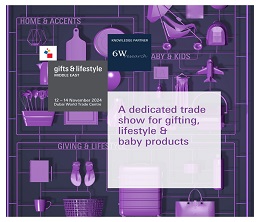United Kingdom (UK) Food Authenticity Testing Market (2024-2030) Outlook | Analysis, Revenue, Size, Industry, Growth, Share, Trends, Forecast, Companies & Value
| Product Code: ETC4544830 | Publication Date: Jul 2023 | Updated Date: Jul 2024 | Product Type: Report | |
| Publisher: 6Wresearch | No. of Pages: 85 | No. of Figures: 45 | No. of Tables: 25 | |
United Kingdom (UK) Food Authenticity Testing Market Overview
Food authenticity testing in the UK is crucial to ensure compliance with regulatory standards and meet consumer demand for transparency. Market growth is fueled by increasing incidents of food fraud and stringent government regulations. Challenges include the complexity of detecting sophisticated fraud techniques and the need for rapid testing methods.
Drivers of the market
The UK food authenticity testing market is driven by growing concerns over food fraud, increasing globalization of food supply chains, and stringent regulatory standards for food safety and quality. Authenticity testing ensures compliance with labeling regulations and verifies the origin and composition of food products, thereby preventing economic fraud and protecting consumer health. Advancements in analytical techniques, including DNA testing, chromatography, and spectroscopy, enable accurate and reliable detection of adulterants and contaminants in food products, fostering market growth.
Challenges of the market
In the UK, the food authenticity testing market faces challenges related to increasing global trade and complex supply chains. Instances of food fraud and the mislabeling of products highlight the need for robust testing methodologies and regulatory oversight. However, the high cost of sophisticated testing equipment and skilled personnel poses barriers to market entry and operational scalability for testing laboratories. Addressing these challenges requires collaboration between industry stakeholders, advancements in testing technologies, and stringent regulatory enforcement to ensure food safety and consumer trust.
Government Policy of the market
The UK government implements rigorous policies in the food authenticity testing market to combat food fraud and ensure consumer confidence. Regulatory frameworks mandate accurate labeling and traceability of food products, bolstering transparency in the supply chain. Investments in testing infrastructure and technologies support the market`s capability to detect adulteration and maintain food integrity.
Key Highlights of the Report:
- United Kingdom (UK) Food Authenticity Testing Market Outlook
- Market Size of United Kingdom (UK) Food Authenticity Testing Market, 2023
- Forecast of United Kingdom (UK) Food Authenticity Testing Market, 2030
- Historical Data and Forecast of United Kingdom (UK) Food Authenticity Testing Revenues & Volume for the Period 2020 - 2030
- United Kingdom (UK) Food Authenticity Testing Market Trend Evolution
- United Kingdom (UK) Food Authenticity Testing Market Drivers and Challenges
- United Kingdom (UK) Food Authenticity Testing Price Trends
- United Kingdom (UK) Food Authenticity Testing Porter's Five Forces
- United Kingdom (UK) Food Authenticity Testing Industry Life Cycle
- Historical Data and Forecast of United Kingdom (UK) Food Authenticity Testing Market Revenues & Volume By Target Testing for the Period 2020 - 2030
- Historical Data and Forecast of United Kingdom (UK) Food Authenticity Testing Market Revenues & Volume By Meat Speciation for the Period 2020 - 2030
- Historical Data and Forecast of United Kingdom (UK) Food Authenticity Testing Market Revenues & Volume By Country of Origin & Ageing for the Period 2020 - 2030
- Historical Data and Forecast of United Kingdom (UK) Food Authenticity Testing Market Revenues & Volume By Adulteration & False Labeling for the Period 2020 - 2030
- Historical Data and Forecast of United Kingdom (UK) Food Authenticity Testing Market Revenues & Volume By Technology for the Period 2020 - 2030
- Historical Data and Forecast of United Kingdom (UK) Food Authenticity Testing Market Revenues & Volume By PCR-Based for the Period 2020 - 2030
- Historical Data and Forecast of United Kingdom (UK) Food Authenticity Testing Market Revenues & Volume By LC-MS/MS for the Period 2020 - 2030
- Historical Data and Forecast of United Kingdom (UK) Food Authenticity Testing Market Revenues & Volume By Isotope for the Period 2020 - 2030
- Historical Data and Forecast of United Kingdom (UK) Food Authenticity Testing Market Revenues & Volume By Food Tested for the Period 2020 - 2030
- Historical Data and Forecast of United Kingdom (UK) Food Authenticity Testing Market Revenues & Volume By Meat for the Period 2020 - 2030
- Historical Data and Forecast of United Kingdom (UK) Food Authenticity Testing Market Revenues & Volume By Dairy for the Period 2020 - 2030
- Historical Data and Forecast of United Kingdom (UK) Food Authenticity Testing Market Revenues & Volume By Processed Foods for the Period 2020 - 2030
- United Kingdom (UK) Food Authenticity Testing Import Export Trade Statistics
- Market Opportunity Assessment By Target Testing
- Market Opportunity Assessment By Technology
- Market Opportunity Assessment By Food Tested
- United Kingdom (UK) Food Authenticity Testing Top Companies Market Share
- United Kingdom (UK) Food Authenticity Testing Competitive Benchmarking By Technical and Operational Parameters
- United Kingdom (UK) Food Authenticity Testing Company Profiles
- United Kingdom (UK) Food Authenticity Testing Key Strategic Recommendations
Frequently Asked Questions About the Market Study (FAQs):
1 Executive Summary |
2 Introduction |
2.1 Key Highlights of the Report |
2.2 Report Description |
2.3 Market Scope & Segmentation |
2.4 Research Methodology |
2.5 Assumptions |
3 United Kingdom (UK) Food Authenticity Testing Market Overview |
3.1 United Kingdom (UK) Country Macro Economic Indicators |
3.2 United Kingdom (UK) Food Authenticity Testing Market Revenues & Volume, 2020 & 2030F |
3.3 United Kingdom (UK) Food Authenticity Testing Market - Industry Life Cycle |
3.4 United Kingdom (UK) Food Authenticity Testing Market - Porter's Five Forces |
3.5 United Kingdom (UK) Food Authenticity Testing Market Revenues & Volume Share, By Target Testing, 2020 & 2030F |
3.6 United Kingdom (UK) Food Authenticity Testing Market Revenues & Volume Share, By Technology, 2020 & 2030F |
3.7 United Kingdom (UK) Food Authenticity Testing Market Revenues & Volume Share, By Food Tested, 2020 & 2030F |
4 United Kingdom (UK) Food Authenticity Testing Market Dynamics |
4.1 Impact Analysis |
4.2 Market Drivers |
4.3 Market Restraints |
5 United Kingdom (UK) Food Authenticity Testing Market Trends |
6 United Kingdom (UK) Food Authenticity Testing Market, By Types |
6.1 United Kingdom (UK) Food Authenticity Testing Market, By Target Testing |
6.1.1 Overview and Analysis |
6.1.2 United Kingdom (UK) Food Authenticity Testing Market Revenues & Volume, By Target Testing, 2020 - 2030F |
6.1.3 United Kingdom (UK) Food Authenticity Testing Market Revenues & Volume, By Meat Speciation, 2020 - 2030F |
6.1.4 United Kingdom (UK) Food Authenticity Testing Market Revenues & Volume, By Country of Origin & Ageing, 2020 - 2030F |
6.1.5 United Kingdom (UK) Food Authenticity Testing Market Revenues & Volume, By Adulteration & False Labeling, 2020 - 2030F |
6.2 United Kingdom (UK) Food Authenticity Testing Market, By Technology |
6.2.1 Overview and Analysis |
6.2.2 United Kingdom (UK) Food Authenticity Testing Market Revenues & Volume, By PCR-Based, 2020 - 2030F |
6.2.3 United Kingdom (UK) Food Authenticity Testing Market Revenues & Volume, By LC-MS/MS, 2020 - 2030F |
6.2.4 United Kingdom (UK) Food Authenticity Testing Market Revenues & Volume, By Isotope, 2020 - 2030F |
6.3 United Kingdom (UK) Food Authenticity Testing Market, By Food Tested |
6.3.1 Overview and Analysis |
6.3.2 United Kingdom (UK) Food Authenticity Testing Market Revenues & Volume, By Meat, 2020 - 2030F |
6.3.3 United Kingdom (UK) Food Authenticity Testing Market Revenues & Volume, By Dairy, 2020 - 2030F |
6.3.4 United Kingdom (UK) Food Authenticity Testing Market Revenues & Volume, By Processed Foods, 2020 - 2030F |
7 United Kingdom (UK) Food Authenticity Testing Market Import-Export Trade Statistics |
7.1 United Kingdom (UK) Food Authenticity Testing Market Export to Major Countries |
7.2 United Kingdom (UK) Food Authenticity Testing Market Imports from Major Countries |
8 United Kingdom (UK) Food Authenticity Testing Market Key Performance Indicators |
9 United Kingdom (UK) Food Authenticity Testing Market - Opportunity Assessment |
9.1 United Kingdom (UK) Food Authenticity Testing Market Opportunity Assessment, By Target Testing, 2020 & 2030F |
9.2 United Kingdom (UK) Food Authenticity Testing Market Opportunity Assessment, By Technology, 2020 & 2030F |
9.3 United Kingdom (UK) Food Authenticity Testing Market Opportunity Assessment, By Food Tested, 2020 & 2030F |
10 United Kingdom (UK) Food Authenticity Testing Market - Competitive Landscape |
10.1 United Kingdom (UK) Food Authenticity Testing Market Revenue Share, By Companies, 2023 |
10.2 United Kingdom (UK) Food Authenticity Testing Market Competitive Benchmarking, By Operating and Technical Parameters |
11 Company Profiles |
12 Recommendations |
13 Disclaimer |
- Single User License$ 1,995
- Department License$ 2,400
- Site License$ 3,120
- Global License$ 3,795
Search
Related Reports
- Czech Republic Crude Sulfate Turpentine Market Outlook | Size, Forecast, Growth, Share, Analysis, Trends, Value, Companies, COVID-19 IMPACT, Revenue & Industry
- Poland Crude Sulfate Turpentine Market Outlook | Revenue, Value, Share, Growth, Forecast, COVID-19 IMPACT, Size, Industry, Analysis, Trends & Companies
- Germany Stainless Steel Commercial Kitchen Appliances Market (2024-2030) | Segmentation, Growth, Outlook, Share, Analysis, Industry, Companies, Value, Size & Revenue, Forecast, Trends
- Bus Market (2024-2030) | Trends, Size, Value, Forecast, Growth, Share, Companies, Analysis, Revenue & Industry
- Canned Food Market (2024-2030) | companies, industry, Size, Share, Revenue, Forecast, Trends, Analysis, Growth, Value, Outlook
- India Video Surveillance Market (2024-2030) | Size, industry, Share, Trends, Revenue, Analysis, Forecast, Growth, Value, Outlook
- India Air Conditioner (AC) Market (2024-2030) | Share, Size, Growth, Industry, Segmentation, Trends, Value, Revenue, Analysis & Outlook
- Poland Printing Market (2024-2030) | Trends, Companies, Share, Industry, Value, Growth, Analysis, Outlook, Forecast, Size & Revenue
- Argentina Data storage devices Market (2024-2030) | Size, Share, Industry, Trends, Growth, Value, Revenue, Analysis & Outlook
- UAE Cyber Security Market (2024-2030) | industry, Size, Share, Revenue, Analysis, Forecast, Growth, Trends & Outlook
Industry Events and Analyst Meet
Our Clients
Whitepaper
- Middle East & Africa Commercial Security Market Click here to view more.
- Middle East & Africa Fire Safety Systems & Equipment Market Click here to view more.
- GCC Drone Market Click here to view more.
- Middle East Lighting Fixture Market Click here to view more.
- GCC Physical & Perimeter Security Market Click here to view more.
6WResearch In News
- India's Printer Market Faces 20.7% Decline in Q4 2023: Epson and HP Lead Amidst Downturn
- India's Camera Market Sees 8.9% Decline in Q4 2023; Canon Leads with 38.4% Share
- Doha a strategic location for EV manufacturing hub: IPA Qatar
- Demand for luxury TVs surging in the GCC, says Samsung
- Empowering Growth: The Thriving Journey of Bangladesh’s Cable Industry
- The future of gaming industry in the Philippines













